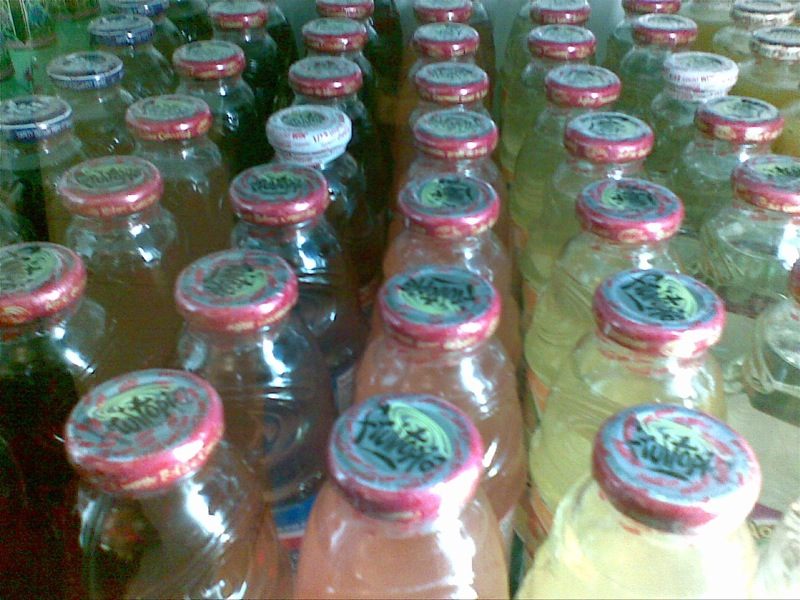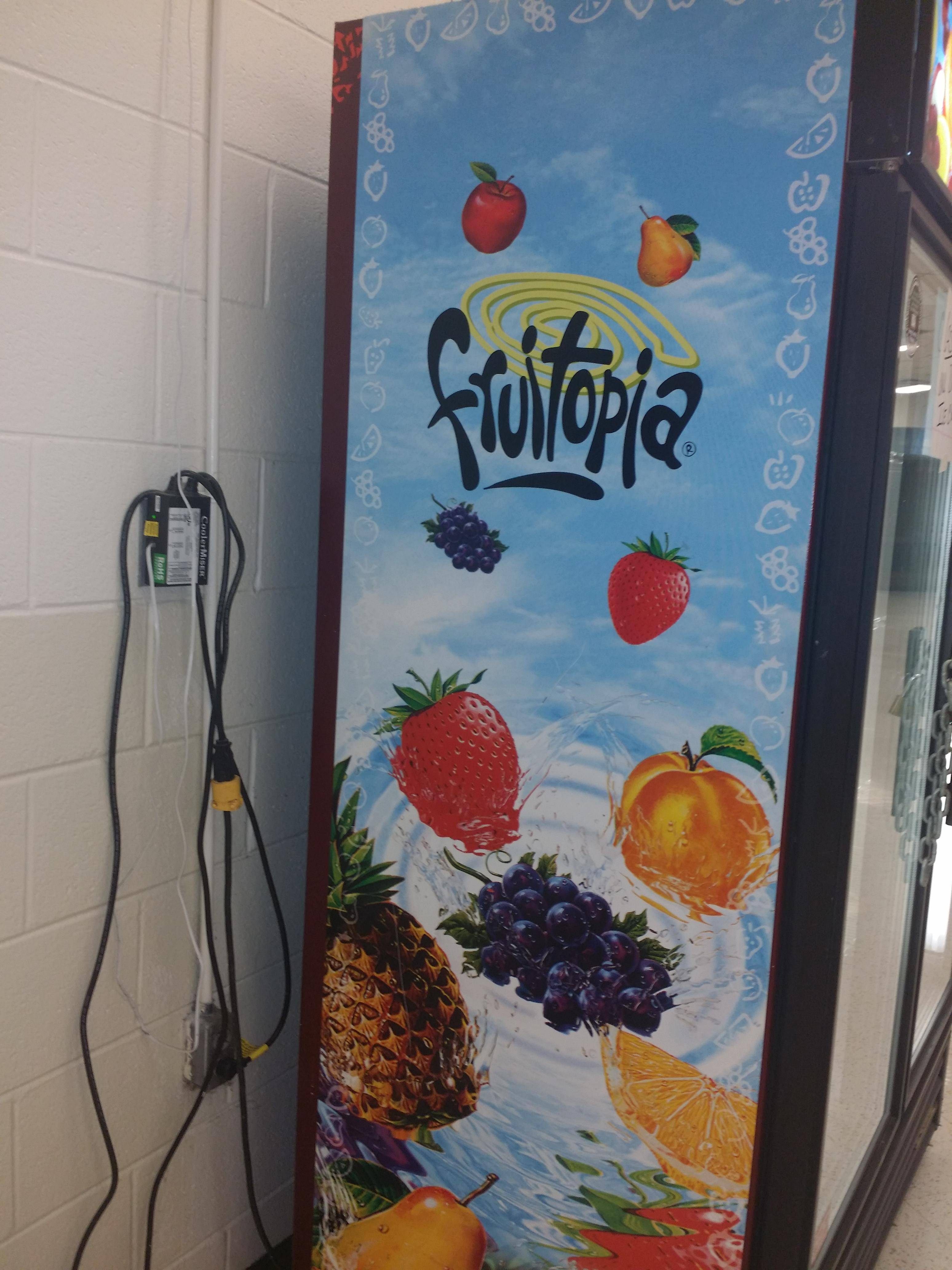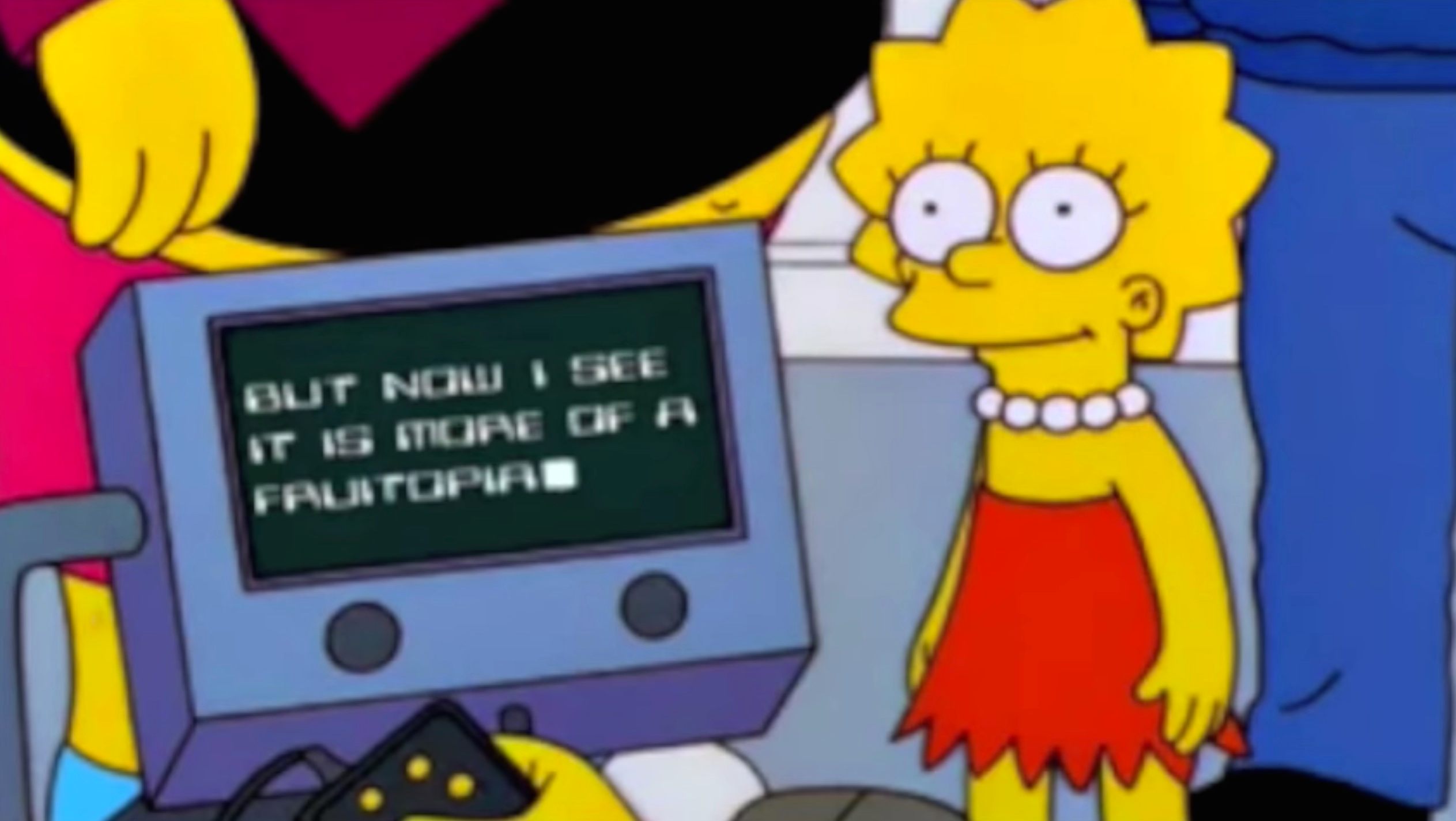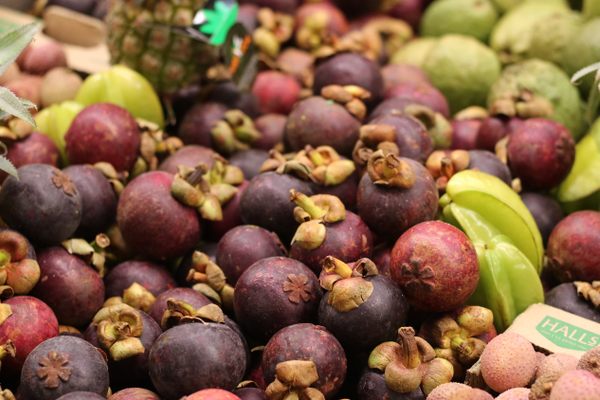The Rise and Fall of Fruitopia, the Trippiest Beverage of the ’90s
Wherefore art thou, Strawberry Passion Awareness?

When Rachel Edelman was a kid in Memphis in the 1990s, summer meant afternoons with her mom and brothers at the local Jewish Community Center. The JCC was great: it had a pool, and sometimes her dad would come after work and they’d all order pizza.
Best of all, though, was the vending machine. “It had Coke and stuff, but we were never allowed those,” says Edelman. “But we were allowed to get Fruitopia. I’d ask my mom if we could have it, and she’d say, ‘If you can find enough change in my purse for all of you!’ And I was like ‘Ok, I’ll find it!”
If you were exposed to Fruitopia as a youth, chances are that you remember it vividly. The drink, with its day-glo colors and funny flavor names, was somehow both adult-approved and delicious. “Fruitopia was social currency in the Medfield lunchroom,” says Doug Linse, now 27. “Every so often, I would discover a dollar in my pocket left over from some purchase the previous day and I would be euphoric.”
I also remember scrimping for a bottle of the stuff—gulping it down, reading the weird label while blissed out on sugar, and then asking my friends to describe the color of my tongue. One of my friends recalls drinking it at a wedding-themed elementary school party, because it was the height of class.

A blurry but promising phalanx of Fruitopia. (Photo: Gord Fynes/CC BY-ND 2.0)
Look for Fruitopia in America today, though, and you’ll come up empty. The drink was a bit like youth itself—there one day, gone the next, leaving behind only a sweet, faintly sickly aftertaste. But where did it come from? What made it so great? And where, oh where did it go?
Like so many superheroes, Fruitopia was engineered in response to a threat. In the early 1990s, the public’s love affair with regular old soda began to wane. Increasingly, the thirsty masses were turning to so-called “new age” or “alternative” drinks—especially Snapple, a proudly health-minded libation that spoofed sugary drinks in its advertisements. “Sales of such unconventional beverages have exploded,” wrote the New York Times in 1994. Coca-Cola wanted a piece of that liquid pie.
Also like many superheroes, the drink’s true parentage is a bit mysterious. Coke insists that they came up with the name “Fruitopia” during the development process. But students at a marketing program at Ohio’s Miami University also specifically remember coining it, during a Coke-sponsored contest over the summer of 1991. Coke threw out their designs and slogans, but, the students allege, kept their name. (They won a Coca-Cola pen for their efforts.)
OK Soda, another Zyman-backed creation. (Photo: TeemPlayer/CC BY-SA 3.0)
After three years of (presumably) concocting and market-testing, Coke had six Fruitopia flavors. Yet fruity sugar water—even the greatest fruity sugar water in the world!—is nothing without an underlying concept. Enter Sergio Zyman, the bad boy of Coca-Cola’s marketing team, equally famous for his smashing successes (like Diet Coke and Cherry Coke) and his intriguing misses (like the infamous New Coke, and OK Soda, an orange-flavored cola aimed at misanthropic teens). For Fruitopia, Zyman brought in ad agency Chiat/Day, known for their offbeat work with Apple and Jiffi Condoms.
While Snapple’s fruit cocktail flavors generally had straightforward names like “Raspberry Peach,” Fruitopia’s flavors had new age-sounding names like Citrus Consciousness, Strawberry Passion Awareness, and Grape Beyond. Snapple had the earnest tagline “made from the best stuff on earth,” but Fruitopia offered whimsy, with labels sprinkled with idealistic sayings—“If your mouth can’t say something nice, put something nice in it,” or “Lemonade, love and hope— ⅔ appear in the Old Testament.”
“What is our new product announcement?” Zyman said in March of 1994, during what attendees presumed was, indeed, a new product announcement. “Let me answer that question by saying that it’s not so much a product as it is an attitude… an attitude about what people want from their beverages.”
Chiat/Day kept wringing their brains for fruity inspiration. Meanwhile, Coke poured money into the brand like sugar into a vat. This combination was potent, and soon Fruitopia was everywhere. Hired teens toured the U.S., handing free bottles of Raspberry Psychic Lemonade through the windows of swirl-painted school buses. In New York, entire subway cars were plastered with Fruitopian vistas, marking the first time a company had taken over a whole car.
Television commercials rolled out, featuring kaleidoscopic fruits and zen sayings and soundtracks by the likes of Kate Bush and Cocteau Twins. Bush penned nine jingles for the first TV campaign, the greatest of which features her shouting “Hey! Hey! Juice!” over a windy synth and clashing drums.
Somehow, it worked. The campaign, with its integrated vision, went above and beyond traditional branding efforts. “The names, the label design, the bottle, the ‘mystic’ sayings, even the ideas behind each flavor—these were all considered in a branded, conceptual sense,” says Charlie Hopper, a longtime restaurant marketer who still remembers seeing Fruitopia ads in 1994 awards booklets. “That was kind of an exciting thing. It was an entire experience.”

A Fruitopia vending machine, in the wild. (Photo: dkwannabe101/Imgur)
Interviews with contemporaneous ninth graders show them to have also been awestruck by both drink and salesmanship. “It tastes completely different from just about everything,” insisted one. “[The ad] has all this different colors and words and stuff,” another added. “I told my mom to buy it.”
But this heavenly match ended as quickly as it began. Following a Mad Men-style merger—in which Chiat/Day was acquired by Omnicom, which already handled Pepsi—the Fruitopia account was moved to Leo Burnett, a bigger, creakier agency with a reputation for playing it safe. “At the time, all of us in creative-driven agencies felt our team had lost a big one,” says Hopper. “Like all utopian ideals, it only lasted a while until pragmatists came in and saved it.”
Despite being yanked so abruptly from its brandparents, Fruitopia coasted on its popularity for a while. Coke started a campaign where kids could trade bottle caps for free stuff at Blockbuster and TGI Friday’s, spinning the Fruitopian ideal into a very appealing economy. Leonardo DiCaprio, then a post-teen hearthrob, called it his favorite drink.

The coveted Steven-Hawking-as-a-Springfieldian shoutout. (Screenshot: Youtube)
Fruitopia cemented its status as a pop culture sensation when it received the ultimate gold star of the 1990s: a shoutout on the Simpsons. The drink appeared in the episode “They Saved Lisa’s Brain,” in which Lisa joins Mensa and meets Stephen Hawking. “I wanted to see your utopia,” Hawking says, “but now I see it is more of a Fruitopia.”
After going through the rest of the lines without a hitch, the computer attached to Hawking’s voice synthesizer didn’t know the brand name, so Hawking and his team were forced to reconstruct the word phonetically. “We were taking the most brilliant man in the world and using his time to record ‘Fruitopia’ in individual syllables,” show writer Matt Selman later recalled on the episode’s DVD commentary. Not bad for approximately 17-percent juice.
But trouble was afoot. In April of 1996, six Fruitopia flavors, including Lemonade Love & Hope and Tropical Consideration, were kicked off the roster for bad sales. Then, that July, when Leo Burnett made ads urging consumers to “find your own Fruitopia,” the car company Saab—whose tagline was “find your own road”—complained.
The replacement slogan was the slightly baffling “Fruit unite. Refreshment happens,” but by 1997, they had changed it once again, citing complaints from consumers that they were “taking themselves too seriously.” This new tag was a bit desperate: “Fruitopia. We just want to make you feel good.” Even that didn’t really work.
In 2000, Royal Crown Cola sued Coke for, among other things, bribing grocery stores to display more Fruitopia. In the meantime, Coke was attempting to pay schools in Madison, Wisconsin, to make the drink a part of their nutrition curriculum. (School officials struck that part from the deal.) Then they shifted ad agencies again, but by that time, it was too late. In the summer of 2003, Coke gave up on Fruitopia. All those poolside vending machines emptied out for good.
But not all is lost. If your own personal paradise includes a ice-cold bottle of Fruitopia, there are a few options available to you. You can head to Canada, where a few flavors, like “amitiés fraises et fruits de la passion” (“Strawberry and Passion Fruit Friendship”), still survive on grocery store shelves. (I could not, despite great effort, manage to get any shipped to the States.) You can get on the waiting list at an old soda website. (This has also not panned out for me thus far.) Or you can head a bit closer to home, to your local McDonalds, where—if rumors are to be believed—it persists in certain soda fountains, sometimes disguised as strawberry Minute Maid.
Perhaps it’s worth it, to guzzle your youth again. But maybe Fruitopia is best left in the past, where it can be truly savored. “I don’t even remember what it tasted like,” says Edelman, who loved it as a kid in Memphis. “But it was the biggest treat.”
Gastro Obscura covers the world’s most wondrous food and drink.
Sign up for our email, delivered twice a week.

























Follow us on Twitter to get the latest on the world's hidden wonders.
Like us on Facebook to get the latest on the world's hidden wonders.
Follow us on Twitter Like us on Facebook